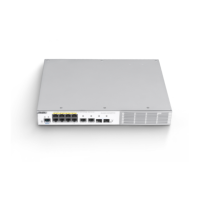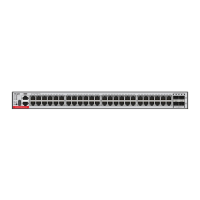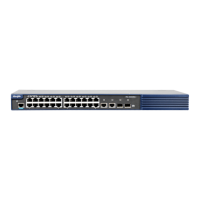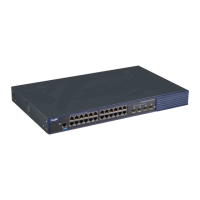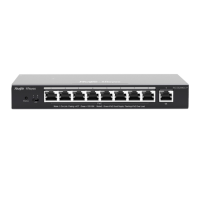Hardware Installation and Reference Guide Appendix
53
7.3 Lightning Protection
Installing AC Power Arrester (lightning protection cable row)
The external lightning protection cable row should be used on the AC power port to prevent the switch from
being struck by lightning when the AC power cable is introduced from the outdoor and directly connected to the
power port of the switch. The lightning protection cable row is fixed on the cabinet, operating table or the wall in
the machine room using the line buttons and screws. AC enters the lightening protection cable row and then
gets to the switch.
Figure 7-4 Schematic Diagram for the Power Arrester
Grounding and polarity detection indicator: If the
indicator is red, cable connection is incorrect (the
ground cable is not connected, or the N and L lines are
reversely connected). Check your power supply line.
Normally running indicator: When the
indicator is green, the circuit is working
properly. Otherwise, the protective circuit is
damaged.
Installed electronic circuit board
Multi-purpose sockets (connected to the power
supply of the switch)
Overload auto-protector, which
can be reset manually
IEC standard socket, which is
connected to the power supply
in the equipment room through
the power cable
Power switch
Note
The power arrester is not provided and the user should purchase it to address the practical requirement.
Precautions for installation:
Make sure that the PE terminal of the power arrester has been well-grounded;
After the switch AC power plug is connected to the socket of the power arrester (lightning protection cable
row), lightning protection function implements if the RUN LED is Green and the ALARM LED is OFF.
If the ALARM LED on the power arrester is Red, you should check whether it is caused by poor grounding
connection or by the reversed connection of the Null and Live lines: Use the multimeter to check the polarity
of the power socket for the arrester when the LED is Red, if the N line is on the left and the L line is on the
right (facing the socket), the arrester PE terminal is not grounded; if the L line is on the left and the N line is
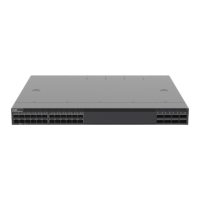
